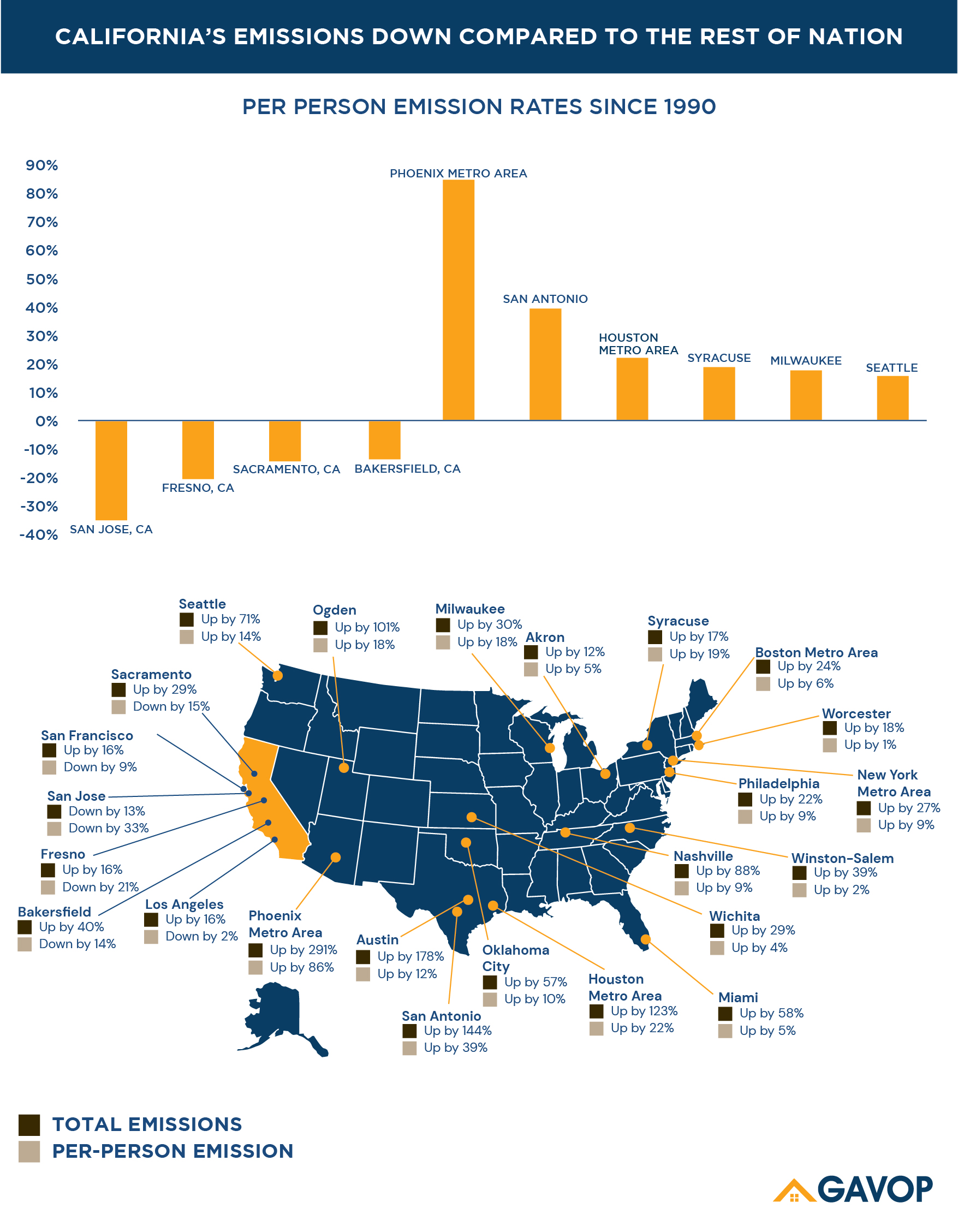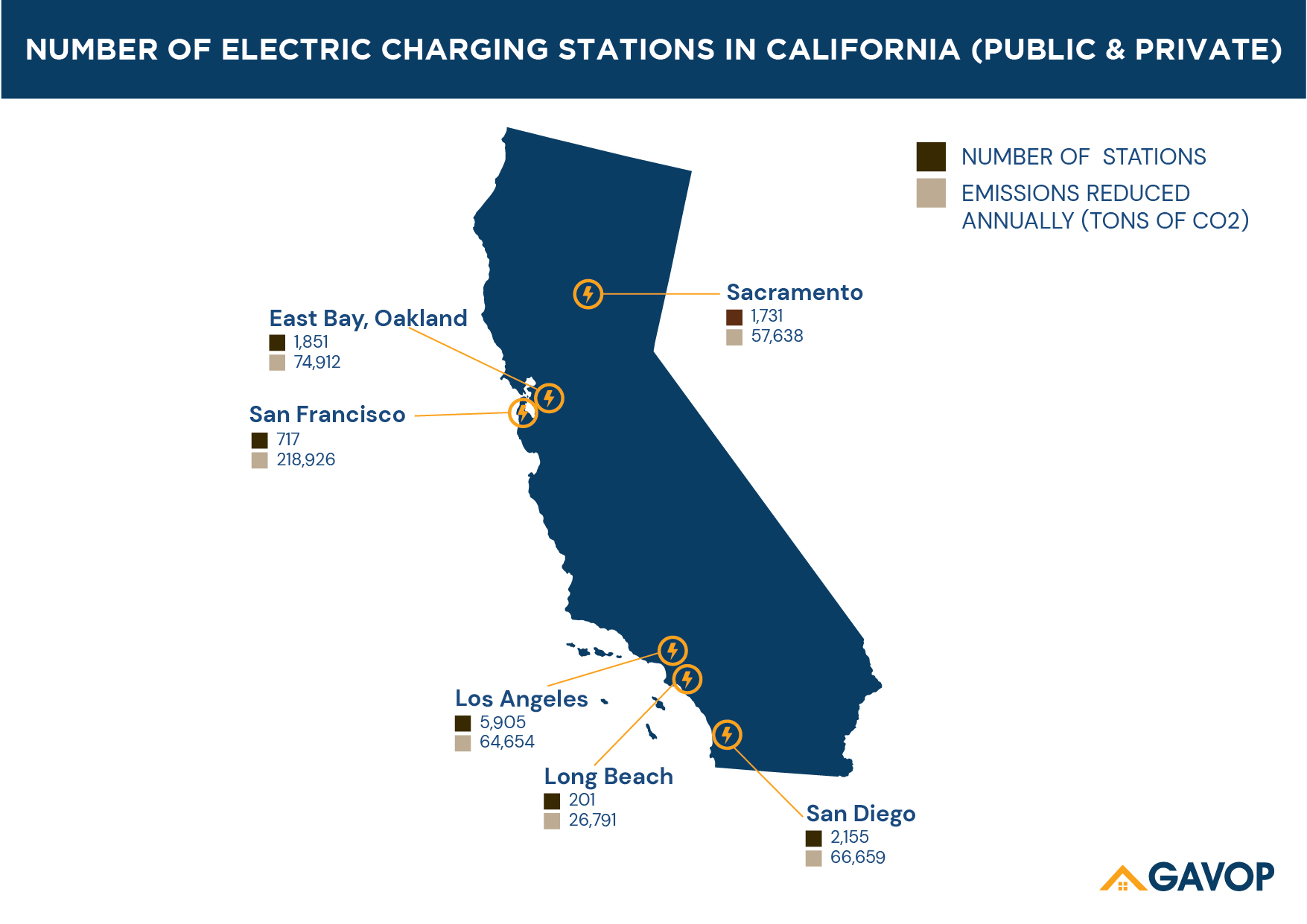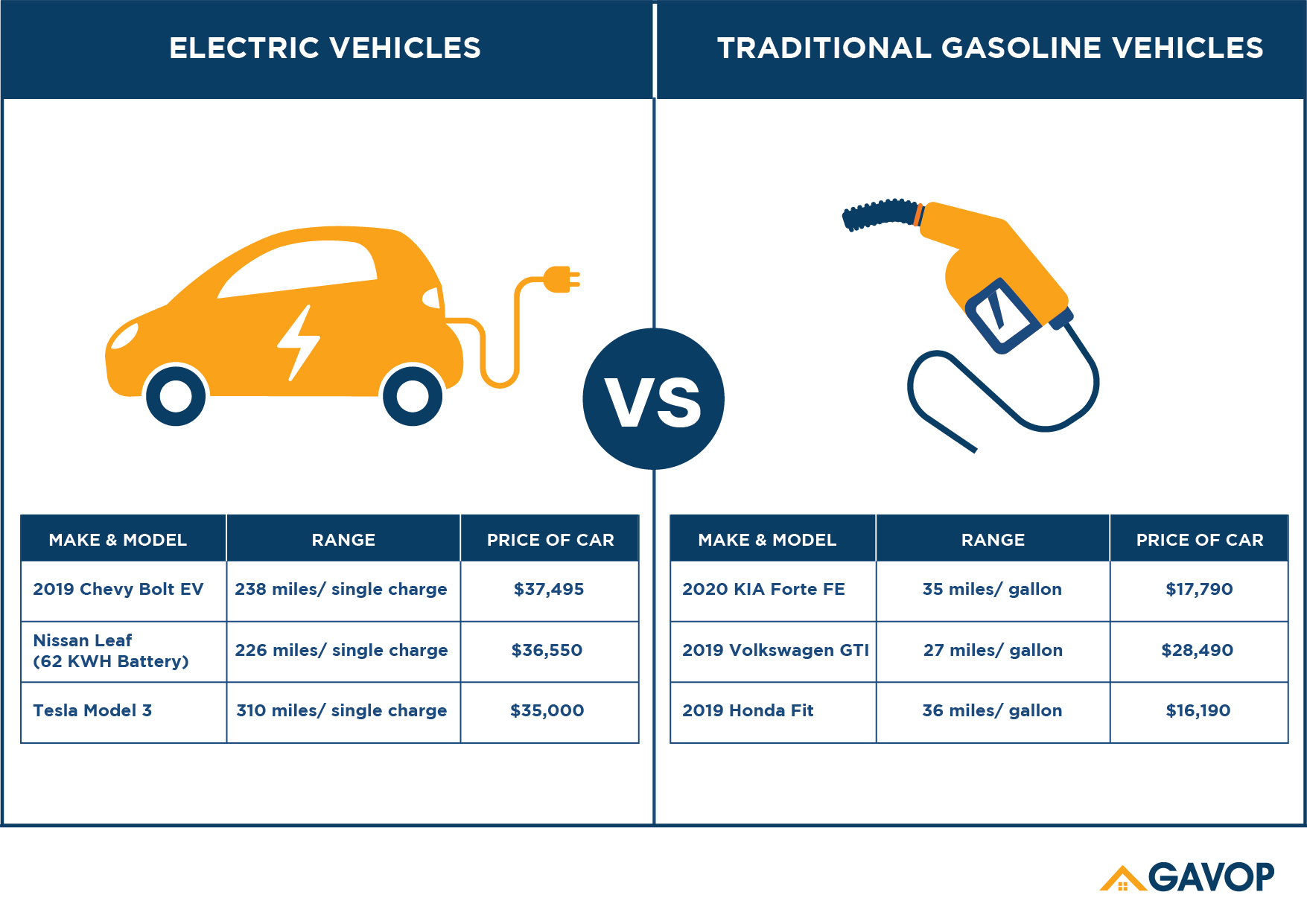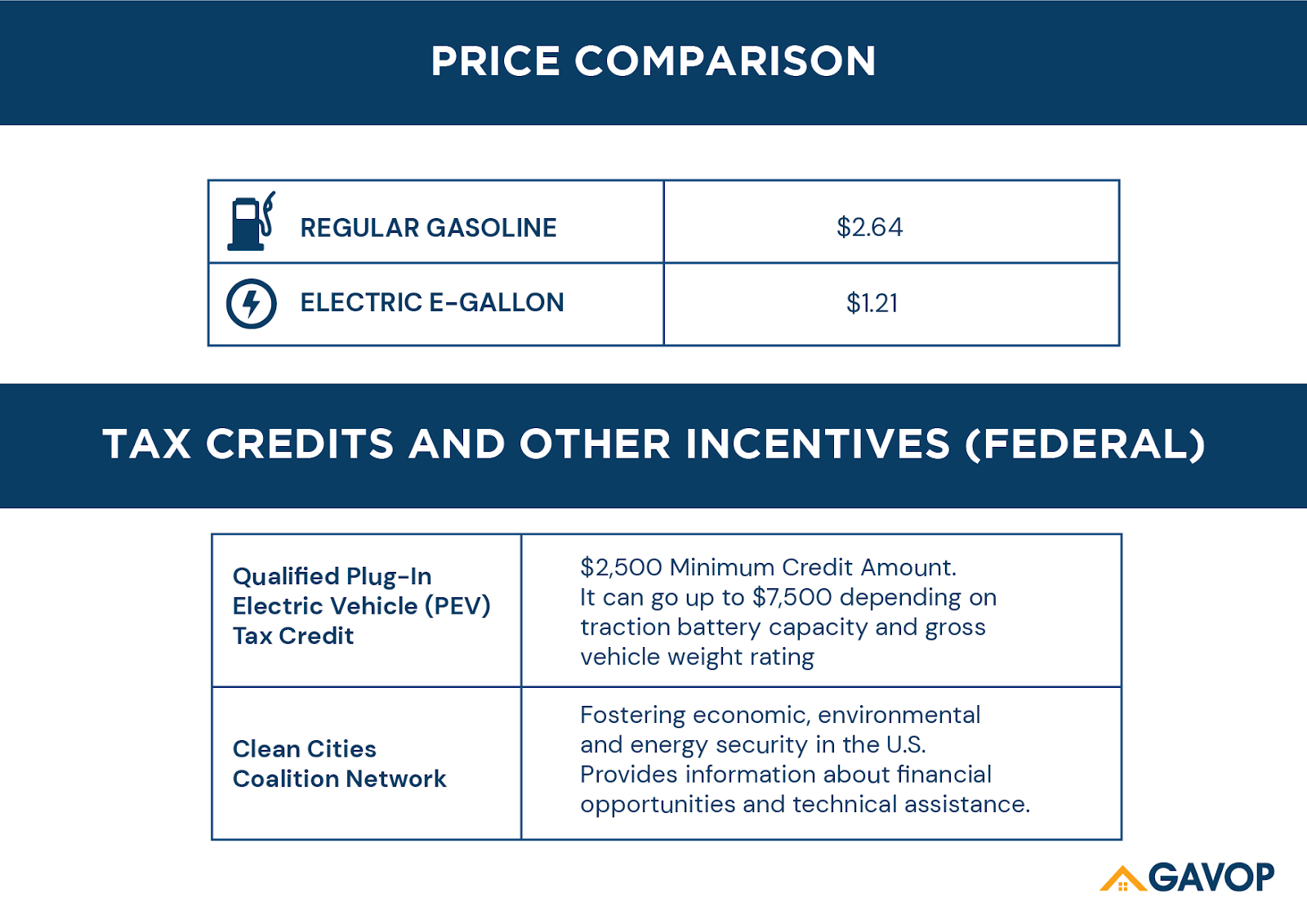California’s Emission Rates Down Compared To The Rest of the Country
By: Gokul Menon October, 18, 2019

NASA’s Carbon Monitoring System (CMS), recently published a Database of Road Transportation Emissions (DARTE). This is a detailed study by NASA using its satellites, to estimate on-road vehicular emissions in the United States. Using the data mentioned above, Gavop compares the rate of emission in California with the rest of the country. This is pertinent in the light of President Trump’s move to roll-back waivers that California enjoyed in setting its own, more stringent, greenhouse gas standards. Emissions from automobiles form a large part of one’s carbon footprint. With increasing discussions in the recent past about climate change (as recently as the UN Climate Action Summit September 2019), it becomes essential to discuss the ethical responsibility in reducing one’s carbon footprint.
A good number of cities and states in the country are making sincere attempts towards reforming regulations on emission rates. But, this recent debate was further triggered by President Trump’s move to curb California’s rights (dates back to the 1970 Clean Air Act) in setting tailpipe emission standards in the state. The Environment Protection Agency (EPA) put concerns over climate change to rest, with an assurance that the Trump government plans on establishing fuel-economy standards in the near future. California had previously vowed to raise the sales of electric and zero-emission vehicles to 15.4%. This tussle between the state and the Trump administration will directly affect California’s right to set its standards in battling climate change. This would undo the good work that the state of California has achieved so far. The administration, through the EPA, further plans on rolling back much of the Obama-era emission standards, stating that the bar was set too high. It is quite challenging to separate the influence of a political tussle from this move, which is a setback in the fight against climate change.
California seems to have succeeded in reducing per-person emission rates, so far. An arena where other states/cities seem to have failed. It is clear that there is a difference in action towards climate change, between Red and Blue states. California’s autonomy in setting emission standards has reaped benefits. Statistics garnered from the Database of Road Transportation Emissions, puts major cities in California, as big players in reducing per-person emission.

AN ERA OF EVs and HYBRIDS?
With the EPA setting its sights on nationwide emission standards, the advanced tech would help regulate and keep the rate of emission in check. States and cities in the U.S have mandatory emission regulations, and inspections even before registering one’s car. Cars that are older than ten years require mandatory, yearly emission inspections. These inspections are limited to cars that run on fossil fuels. Hybrids and electric cars require no such inspections. The Insurance Information Institute (III), lists out various ways in which one could go green with car insurance. Electric Vehicles and Hybrid Cars remain the best way of reducing emissions. However, the pricing, along with the cost of Insurance, does not make it an option viable for all. While some insurance companies offer discounts on Hybrid vehicles, the cost of insuring a Hybrid or an EV continues to be on the higher side. Moreover, the cost of replacing parts and batteries of such vehicles tends to be on the higher side. Insurance companies do not seem to have special provisions for electric and hybrid vehicles.
Gavop compares the range and cost of these vehicles. It is interesting to note that the global warming emission from the manufacturing of EVs is higher than its gasoline counterparts. But, if one compares the lifetime emissions, the former performs better. It is also noteworthy that the sale of Electric Vehicles in California rose by 63.7 % (51,750 units) in the first half of 2019. Yet another step by California towards becoming a greener state. The sale of Electric Vehicles needs to increase rapidly across the globe, to curb emission rates.


It is clear from the above comparisons that gasoline cars are much cheaper than their EV and Hybrid counterparts. But, the Office of Energy Efficiency and Renewable Energy, wants to remind motorists that in the long run (and keeping emission rates in mind), the latter offers better options. While the national average cost of gasoline is 2.64/gallon, an electric e-gallon, costs only $1.21. The above mentioned Federal department defines E-gallon as “the cost of fueling a vehicle with electricity compared to a similar vehicle that runs on gasoline.” It is noteworthy that the price of electricity is much more stable than the price of regular gasoline. Though the initial cost of purchasing an EV is on the higher side, with time, the rate of savings goes up.
One can only hope that political moves, such as the roll-back of positive changes by previous regimes, does not undo the good work done by California and other states.
ABOUT THE AUTHOR

Gokul Menon
Gokul works as a writer at Gavop. He holds an M.A. in Comparative Literature from the University of Hyderabad and a Bachelor’s in English from Madras Christian College. He has been a part of a couple of theatre groups, like Masquerade Youth Theatre and Theatre No. 59 and enjoyed being a part of Literary and Debating circles in Chennai. Gokul is an avid reader and has presented a few academic papers. He spends more time on Goodreads, than on any other social media platform.
